Pippin quail
Songster
I am new to chicken keeping. I hatched my first 15 chicks 3 weeks ago! All are healthy and GROWING! And surprise, surprise, my husband and I are those people who hatched the chicks and thought we would have plenty of time to build a coop.  But with the extreme lumber prices right now my dream wood coop is so far looking like it will cost $2700 not including any insulation or the hardware cloth and run! That's just the lumber for framing, flooring and roofing. Hubby is not going for that....
But with the extreme lumber prices right now my dream wood coop is so far looking like it will cost $2700 not including any insulation or the hardware cloth and run! That's just the lumber for framing, flooring and roofing. Hubby is not going for that....
So we have a couple options. One is buy a plastic Costco shed, still a bit pricey as we would need to add ventilation, windows, insulation, etc and then I don't think it would be quite as big as I'm hoping for. (Most are 8x8 or 7x9) I currently have 15 chicks (about 3-5 I think are going to be roosters based on my amateur feather sexing, so I could be wrong) But of course want to leave room for chicken math!
Our next option is a big metal shed we that was on the property when we bought it... The issues with this are:
1) the floor is rotting out in some places and will need to be ripped out. It's on top of some big steel pipes to keep it off the ground. But I'm trying to figure out if we should try and replace the floor or block off the gap around the edge with wood and hardware cloth and have a dirt floor. I'm hoping to do deep litter so I like the idea of the dirt floor. But wondering thoughts on how the might work in metal and with the raised situation.
2) We live in AB, Canada where it gets cold in the winter. It doesn't usually stay there for long, but we definitely have cold snaps where it gets down to -40°. How would you suggest is the best way to insulate a metal coop? Would I need heat or would adequate insulation and ventilation be enough? Would the roof need insulating as well? I'm not too worried about summer heat as the shed is in a treed/shady area and I also plan on adding windows and a full sliding glass patio door to the side. I'm hoping that will also help heat the coop in the winter when the leaves are gone.
3) The shed is 24x8 feet. So it is definitely big enough for chicken math, separating part of it for feed storage, eventually adding ducks to one side, etc... Lots of options. I'm just wondering, for the time being with what will likely be 12 ish chickens by winter, will a coop that big stay warm enough with that few chickens?
The picture of the shed shows how big it is and it clearly needs a lot of work. It has a few dead mice in it which instantly gives me the heeby jeebies.
And as you can see, my chicks are fast outgrowing their brooder. I made them a temporary outdoor chicken tractor that I bring them out to on nice days. But on rainy days like it has been all week, they all fly out every time I open the brooder and then they explore the room and poop all over the floor Needless to say, we really need to convert or build a coop ASAP.
Needless to say, we really need to convert or build a coop ASAP.
So we have a couple options. One is buy a plastic Costco shed, still a bit pricey as we would need to add ventilation, windows, insulation, etc and then I don't think it would be quite as big as I'm hoping for. (Most are 8x8 or 7x9) I currently have 15 chicks (about 3-5 I think are going to be roosters based on my amateur feather sexing, so I could be wrong) But of course want to leave room for chicken math!
Our next option is a big metal shed we that was on the property when we bought it... The issues with this are:
1) the floor is rotting out in some places and will need to be ripped out. It's on top of some big steel pipes to keep it off the ground. But I'm trying to figure out if we should try and replace the floor or block off the gap around the edge with wood and hardware cloth and have a dirt floor. I'm hoping to do deep litter so I like the idea of the dirt floor. But wondering thoughts on how the might work in metal and with the raised situation.
2) We live in AB, Canada where it gets cold in the winter. It doesn't usually stay there for long, but we definitely have cold snaps where it gets down to -40°. How would you suggest is the best way to insulate a metal coop? Would I need heat or would adequate insulation and ventilation be enough? Would the roof need insulating as well? I'm not too worried about summer heat as the shed is in a treed/shady area and I also plan on adding windows and a full sliding glass patio door to the side. I'm hoping that will also help heat the coop in the winter when the leaves are gone.
3) The shed is 24x8 feet. So it is definitely big enough for chicken math, separating part of it for feed storage, eventually adding ducks to one side, etc... Lots of options. I'm just wondering, for the time being with what will likely be 12 ish chickens by winter, will a coop that big stay warm enough with that few chickens?
The picture of the shed shows how big it is and it clearly needs a lot of work. It has a few dead mice in it which instantly gives me the heeby jeebies.
And as you can see, my chicks are fast outgrowing their brooder. I made them a temporary outdoor chicken tractor that I bring them out to on nice days. But on rainy days like it has been all week, they all fly out every time I open the brooder and then they explore the room and poop all over the floor
Attachments
Last edited:

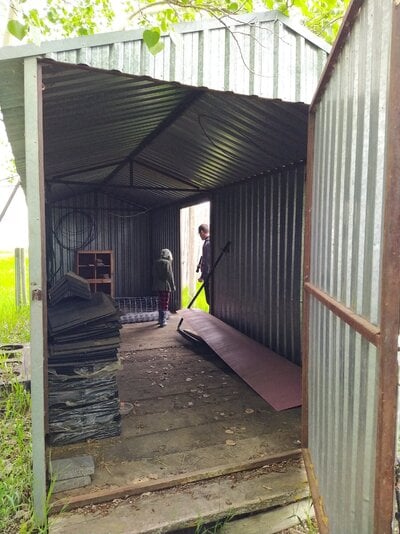
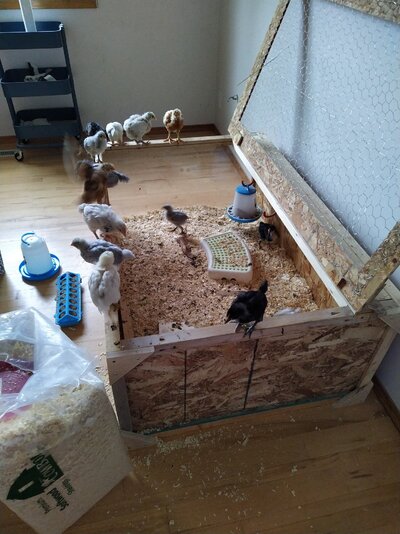
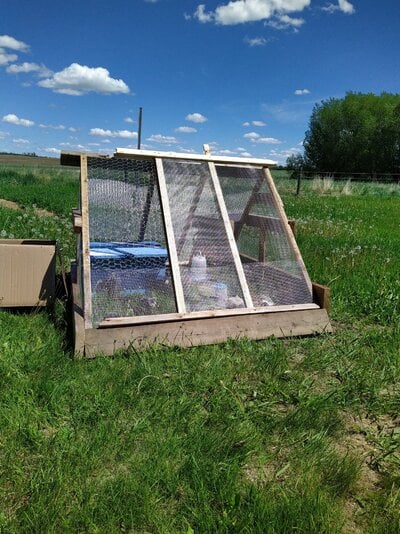


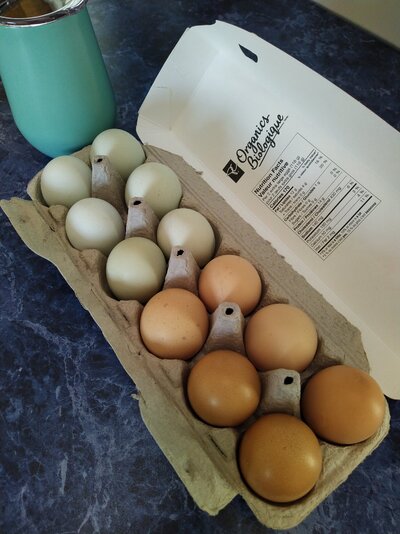
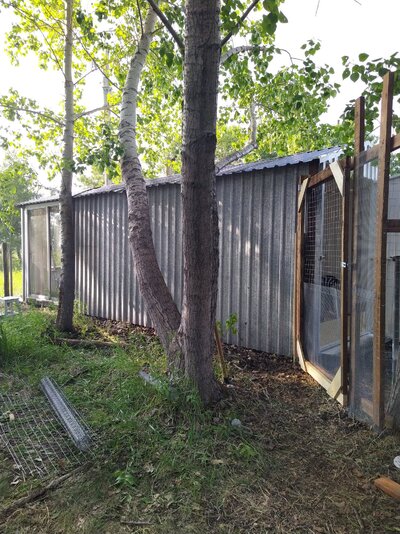
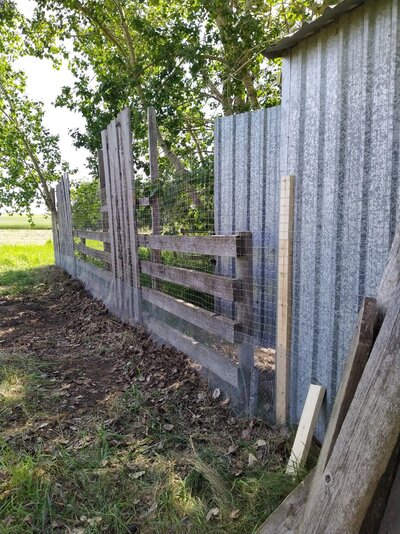
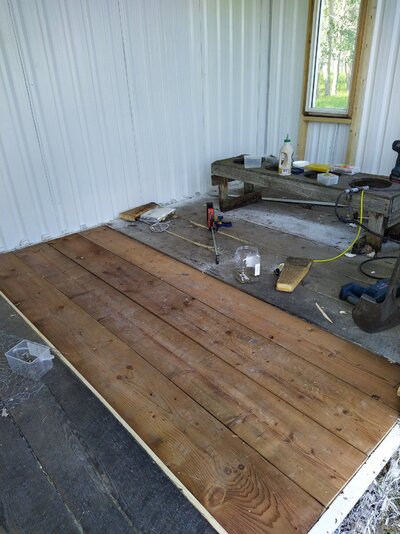
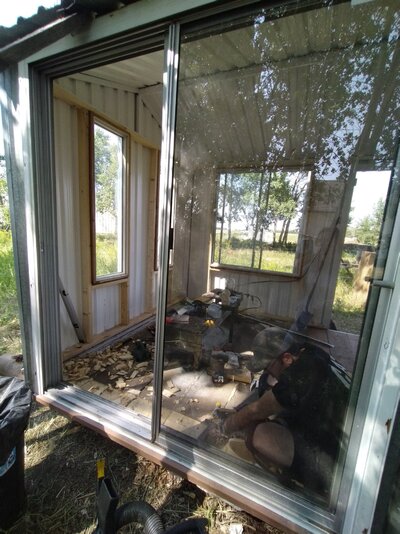
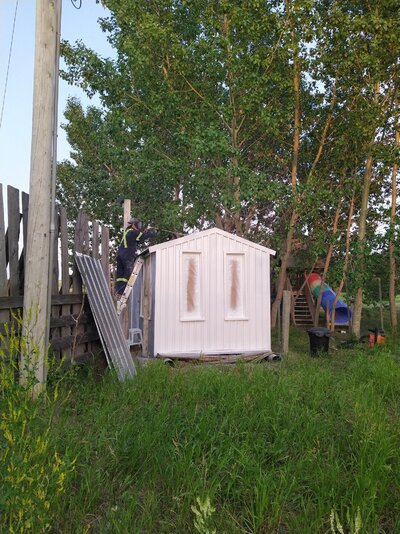
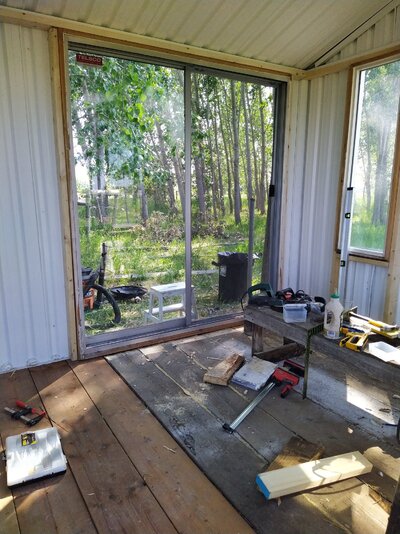
 We also thought we had plenty of time to build a larger coop and choked at the lumber costs. We ended up refurbishing a wood shed on our property. Hope to finish this weekend, so we can move the 7 week olds out of the house!!
We also thought we had plenty of time to build a larger coop and choked at the lumber costs. We ended up refurbishing a wood shed on our property. Hope to finish this weekend, so we can move the 7 week olds out of the house!!